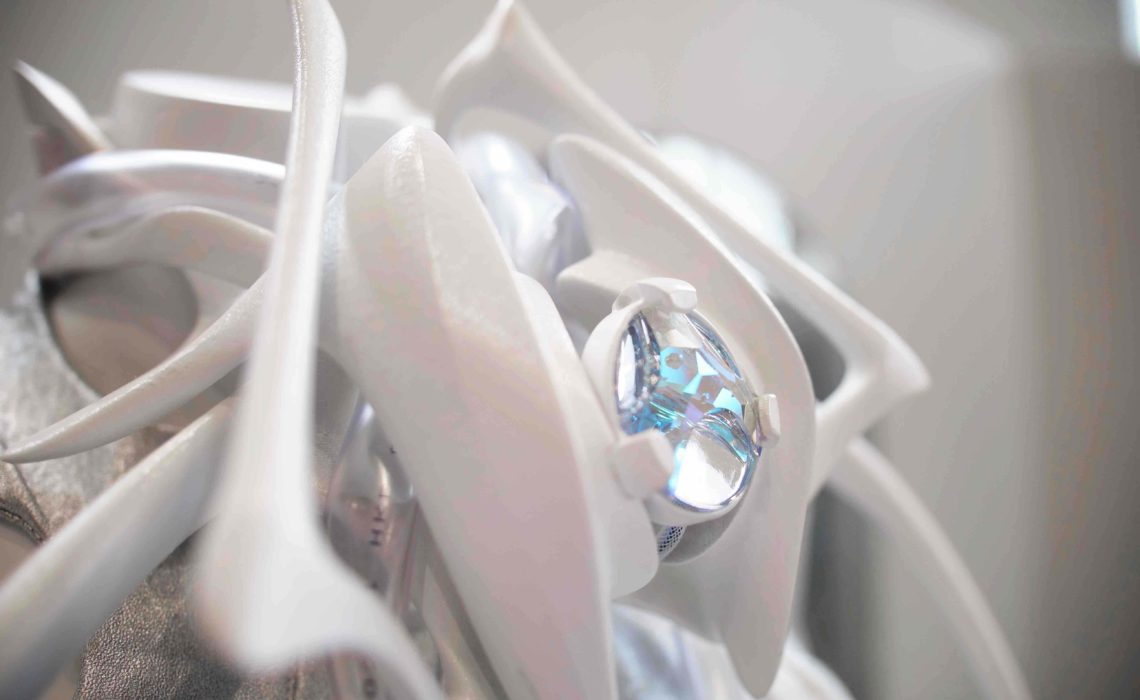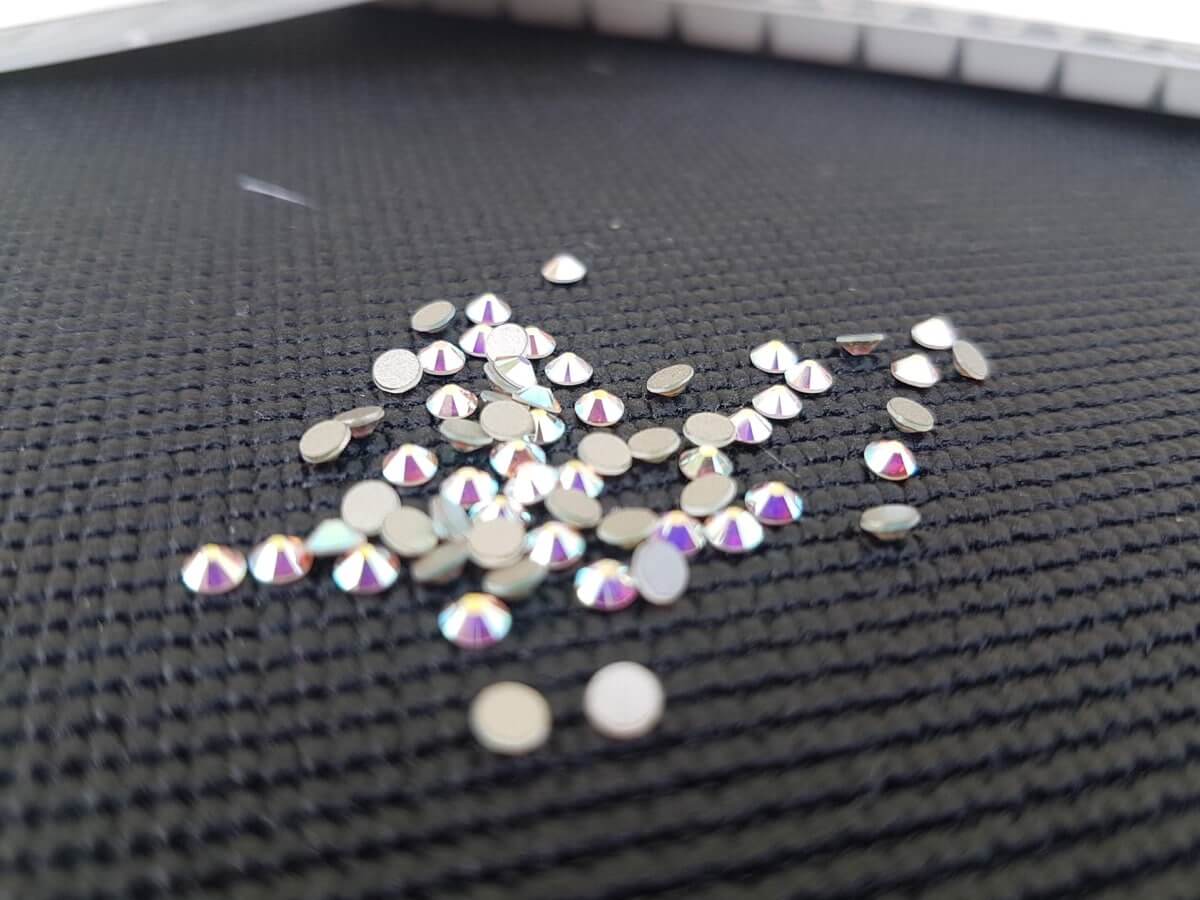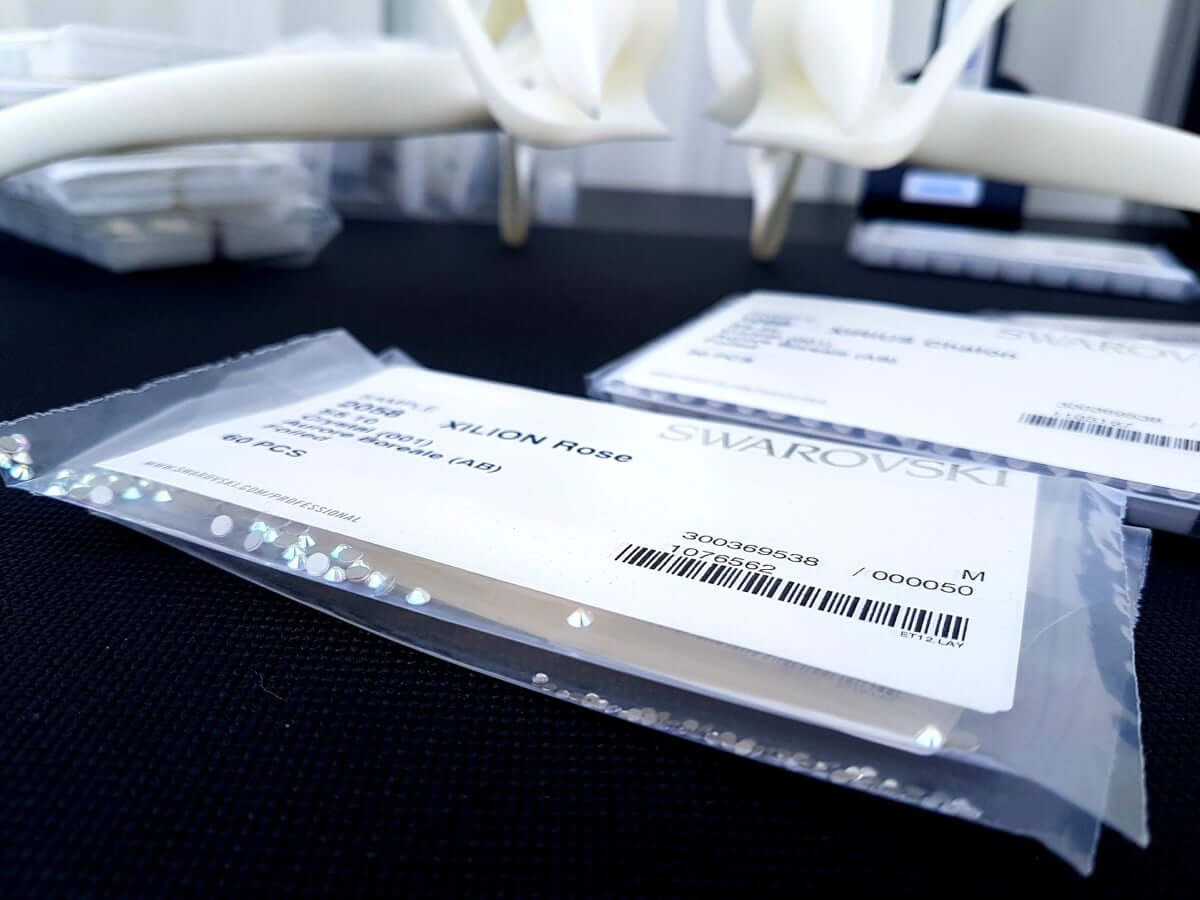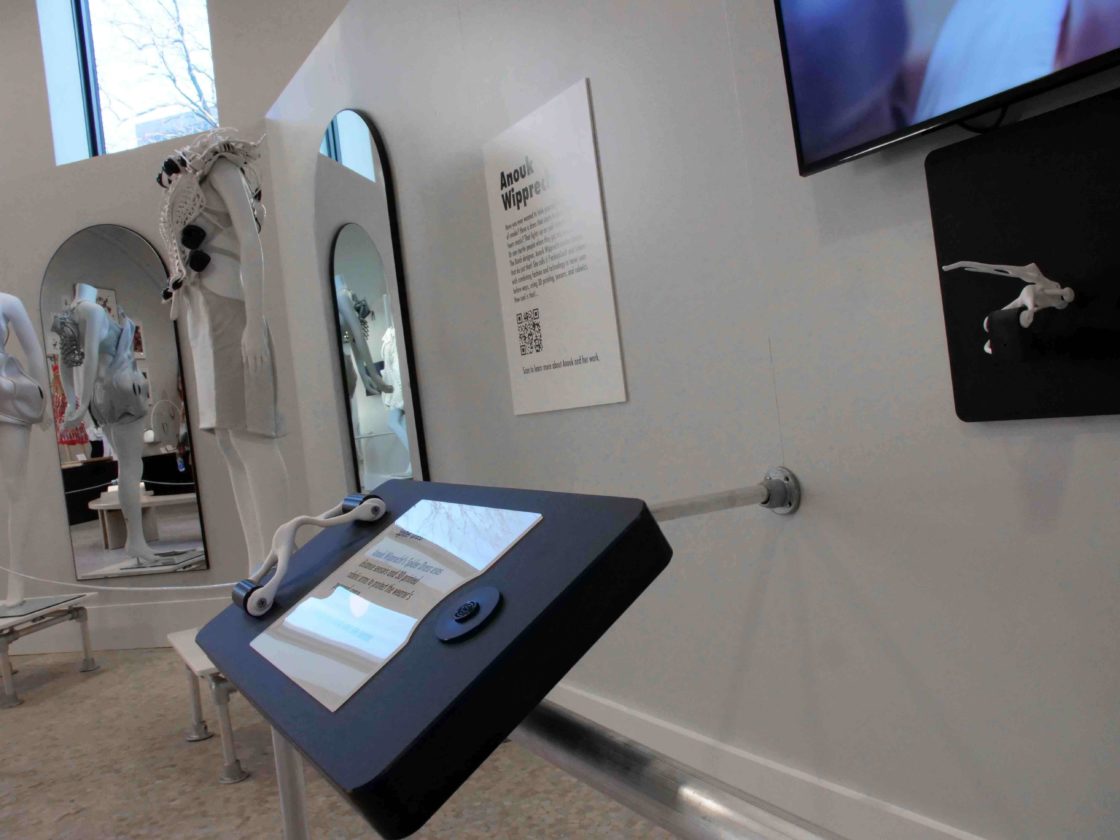
Anouk Wipprecht’s passion for design involves searching for the deeper human connection, exemplified by her latest fashion-tech masterpiece. The HeartBeatDress features 3D printed parts and a custom Swarovski crystal necklace doubling as a heart-monitoring sensor that flashes in time with the wearer’s heart rate.
This latest 3D printed fashion by Wipprecht is the culmination of many years of collaboration and exploration with industry experts. Austrian-headquartered crystal glass manufacturer Swarovski played a central role too, embracing innovation and experimental design for new and upcoming projects.
A collaboration between Swarovski and Wipprecht had been discussed for years.
“They were already beginning to work with ideas like putting film over crystals so they could become touch sensitive,” said Wipprecht. “I was interested in connecting with heart rate, so I came up with an idea for a piece that could translate such data. I thought it was really poetic to create a necklace.”
“It was also quite interesting to see how the crystal could become so sensorial. We made ten of these units, with the adaptability for the sensor to be set into the dress; however, it is also possible to wear it as a standalone piece.”

3D Printing Fashion Accessories for Form and Functionality
Known for her extremely futuristic designs and the application of 3D printing technology in the fashion industry, Anouk Wipprecht has been designing and creating inimitable pieces of work for over 20 years. With all the ‘normal beginnings’ in fashion design school, the Netherlands-born designer quickly moved on to illuminating her work with microcontrollers and associated electronics.
“In 2000, there were not very many people doing what I was doing,” said Wipprecht. “I always used fashion tech to push into the extremes.”
This type of attitude became even easier to incorporate as she began using 3D software and collaborating with other designers, to include Italian architect Niccolo Casas. Working on numerous projects over the years, the collaborators have gained great cumulative knowledge about what works for fashion tech–and what does not. Their goal typically centers around making a complex, elegant design that can also be easily worn.
Enter in Wipprecht’s work with Shapeways, and suddenly the designer was building an impressive arsenal of technological tools from which to draw–whether in bringing forth her own inspirations to fruition or those commissioned by others.

Rapid Prototyping for Careful Production and Placement of 3D Printed Parts
The ability to perform rapid prototyping as necessary with Shapeways has led to greater productivity for Wipprecht in developing challenging designs. And although her style may reflect an ethereal quality at times, Wipprecht realized long ago that 3D printed fashion parts must be strong enough to withstand forceful impact too. This is especially true for her work featuring complex pieces like the Proximity Dress with tentacles that reach out or even dance in response to individuals nearby, or the vertebrae-like structure of the HeartBeatDress. With individuals wearing her dresses for hours at a time, 3D printed fashions must also be able to withstand the rigors of use and travel.
“You look at how things can form around the body and where you need the 3D prints,” said Wipprecht. “The question is how to make it aesthetically pleasing and comfortable to wear.”
Movement is another important factor, as different parts of the dress should not affect the wearer’s posture or overall flow of the design. There may also be a compromise between showing off elements like servo motors and other electronics with a mechanized look, or hiding them with 3D printed housings. Additionally, while one dress may have parts built into the shoulder or hip area, they may be engineered more strategically in another.
“I also enjoy techniques like using a translucent, transparent 3D printing process to make interesting light effects possible,” said Wipprecht.
For each project she collaborates on with Shapeways, Wipprecht states that workflow always proves to be stress-free with 3D printed parts arriving on time, and usually in tandem with all the electronics to be integrated too. The fashion-tech designer points out that the partnership with Shapeways has continued on seamlessly throughout the years because she knows she can count on speed, and a good estimation on parts delivery ‘without any excuses or problems.’

Expanding Design Freedom with Advanced 3D Printing Tools
Wipprecht states that she also appreciates the large selection of materials Shapeways offers, along with providing comprehensive information on the website that makes it easier to do her research in making choices for her designs. Although enjoying continued experimentation with materials like Thermoplastic Urethane (TPU) for varying projects, Wipprecht continues to rely on preferred materials like Nylon 11 [PA11 (SLS)] – a material that designers and engineers also find especially effective due to its biocompatibility.
Derived from natural materials, Nylon 11 [PA11 (SLS)] is durable, strong, impact- and chemical-resistant, and also easy to recycle. In combination with technology like Selective Laser Sintering, designers like Wipprecht enjoy much greater freedom since support structures don’t have to be compensated for–as well as eliminating any post-processing efforts to remove them which could indirectly result in damage.
The fashion-tech designer is known for her meticulous attention to detail, despite work that is often encapsulated within tight deadlines. Sometimes there may only be six to eight weeks allotted to perfect a collection, meaning that Wipprecht must rely on heavily streamlined development and production, especially for her designs that integrate 3D printing robotics.
“I do a lot of 3D printing and robotics, creating designs around the body so they are robotic and sensoric,” said the fashion tech designer.
“With Shapeways, you create your design, check and upload it, and after that you know exactly what to expect.”

About Shapeways
Enjoy the benefits of this advanced technology and a wide range of materials from Shapeways for 3D printing your creations with accuracy, complex detail, and no minimum or limits in terms of mass customization or single part orders. Shapeways has worked with over 1 million customers in 160 countries to 3D print over 21 million parts! Read about case studies, find out more about Shapeways additive manufacturing solutions, and get instant quotes here.


